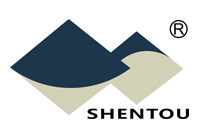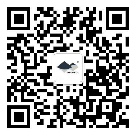CHINA AUTOMOTIVE SUPPLIER QUALITY MANAGEMENT BRIEFING
06/01/2021
Vol. 5, No. 6, June 2021

① QUALITY CHALLENGES & SOLUTIONS WITH YOUR SUPPLIERS IN CHINA
Factory Audits & Quality Inspections
During & Post COVID-19:
On-site Supplier Audits + Remote Participations by International Buyers (Ⅱ)
(Continued from the last issue)
Understand the history and current status of the supplier’s QMS
 ● If the supplier is a manufacturer in the automotive supply chain, it must obtain the third party certification of IATF16949:2016 for its QMS. The real purpose for the supplier to be certified to IATF16949 is to ensure the QMS can provide continuous improvement, emphasize defect prevention, and reduce deviation and waste in the automotive supply chain. It also avoids multi-party certifications, providing a general QMS for the automotive industry. And it checks whether the customer specific QMS requirements are effectively implemented. If the supplier cannot be certified to ITAF16949:2016, it will also mean that the supplier will lose its supplier qualification. Therefore, for the suppliers who have passed the third-party certification, obtained the ITAF16949:2016 QMS certification and met the requirements of ITAF16949:2016 QMS standard, a second-party audit can still be conducted at an appropriate time or waived; For those who have the certification only but fail to implement or just partially implement the IATF16949:2016 standard in the operations, a second-party audit should be carried out.
● If the supplier is a manufacturer in the automotive supply chain, it must obtain the third party certification of IATF16949:2016 for its QMS. The real purpose for the supplier to be certified to IATF16949 is to ensure the QMS can provide continuous improvement, emphasize defect prevention, and reduce deviation and waste in the automotive supply chain. It also avoids multi-party certifications, providing a general QMS for the automotive industry. And it checks whether the customer specific QMS requirements are effectively implemented. If the supplier cannot be certified to ITAF16949:2016, it will also mean that the supplier will lose its supplier qualification. Therefore, for the suppliers who have passed the third-party certification, obtained the ITAF16949:2016 QMS certification and met the requirements of ITAF16949:2016 QMS standard, a second-party audit can still be conducted at an appropriate time or waived; For those who have the certification only but fail to implement or just partially implement the IATF16949:2016 standard in the operations, a second-party audit should be carried out.
● For suppliers who have not passed the third party ISO9001:2015 QMS certification, a second-party audit of the supplier should be conducted using the ISO9001:2015 standard.
● For suppliers who have passed the ISO9001:2015 QMS audit but not the third-party IATF16949:2016 QMS certification, a second-party supplier audit should be conducted according to the IATF16949:2016 standard.
● For suppliers not in the automotive supply chain, they are required to meet the standard of ISO9001:2015.
Evaluate the suppliers’ potential internal and external risks
The greater the changes of the suppliers’ internal and external environment, the higher the potential risks. In this case, we should increase the frequency of audit to ensure that the risk can be effectively controlled.
Assess the suppliers’ performance evaluation results
The audit frequency could be determined based on the performance evaluation of suppliers. For suppliers with poor performance, the audit frequency should be increased. For suppliers with good performance evaluations, the audit can be waived or carried out according to the annual audit plan.
Evaluate the importance of the suppliers’ product and process control
For suppliers producing very important products and with higher requirements for product realization process control, the audit frequency should be increased, especially for the products with higher safety requirements on vehicles.
▌Determine the audit details
Audit plan
The audit plan is the result of planning the specific audit activities according to the customer’s requirements, which should usually be documented; The details of the audit plan are related to the scope and complexity of the audit. The contents usually include audit purpose, audit criteria, audit scope, audit team members and audit activity arrangement.
The audit plan is usually prepared by the audit team leader and submitted to the customer for approval before the audit can be implemented.
Types of audit
The audit types mainly include: QMS audit, manufacturing process audit and product audit.
The QMS is a required and systematic quality management model established within the organization, which is based on the organization’s strategic decision. Combining resources and processes, it is a systematic management based on process management methodology, where key parts of the QMS based on the characteristics of the company are integrated, generally covering processes of management activities, resource provision, product realization, measurement, analysis and improvement activities. This system covers the entire process of planning, implementation, monitoring, correction and improvement for the determination of customer requirements, design and development, production, inspection, sales, and pre-delivery. The QMS is generally documented and becomes the requirements of the organization’s internal quality management.
For suppliers with third-party certified management system certificate and basically meets the requirements of IATF16949:2016 standard, we can also undertake second-party system audit.
(To be continued)
By Felix SS YUAN
② CRITICAL FAILURE MODES / QUALITY CONTROL POINTS IN FOCUS
Wiper Linkage
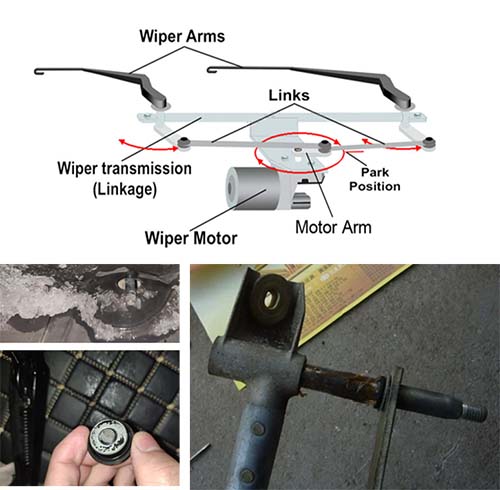
The wiper system is an essential electrical device of the vehicle, which transforms the rotary motion of the motor into the reciprocating motion of the wiper arm. The main function of the wiper linkage is to transfer the energy of the wiper motor to the wiper arms to scrape off foreign matters (water, mud, etc.) on the windshield, so as to ensure that the driver has a good driving vision.
Primary failure mode:
▼ Linkage drive shaft broken
Cause of failure: Stress concentration in the manufacturing process such as machining and heat treatment result in wiper linkage fracture, which eventually leads to the wiper arm falling off and not working.
Preventive measures: Select suitable drive shaft material; control related machining tools.
▼ Ball joint fall-off
Cause of failure: The plastic ball bowl wears out after the lubricant dries up, causing the ball head falling off and eventually leads to the failure of one or both sides of the wiper blades.
Preventive measures: Select appropriate lubricant and the material of the ball head bowl. Control the surface roughness of ball head.
▼ Shaft sleeve abrasion
Cause of failure: Generally due to the failure of the lubricant between the drive shaft of the wiper arm and shaft sleeve of the linkage, also causing abnormal sound. In serious cases, the motor will be burnt due to jamming.
Preventive measures: Choose suitable lubricant, control the surface roughness of the shaft.
By Patrick H. HAN
③ KEY CONCEPTS & PRACTICES IN SUPPLIER QUALITY MANAGEMENT
Pre-production Inspection

Pre-Production Inspection (PPI) is the quality control inspection conducted before the start of the production process. The goal is to assess the quantity and quality of the raw materials and components to be used in manufacturing, and whether they are in conformity with product specifications.
PPI is performed upon the arrival of all raw materials to the factory, especially with a new supplier.
④ CHINA INDUSTRY & MARKET UPDATE
Cost of raw materials:
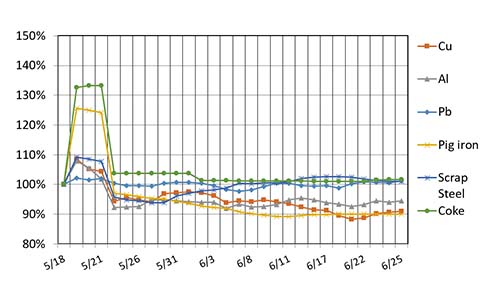
Exchange rates:
![]() USD/RMB: 1:6.4187
USD/RMB: 1:6.4187
![]() EUR/RMB: 1:7.7681
EUR/RMB: 1:7.7681
![]() RUB/RMB: 1:0.0876
RUB/RMB: 1:0.0876
June 2021
Remark: Exchange rates are 30-day average from May 27 to June 25
The above information is for reference only
⑤ IT HELPS TO KNOW...
China Supply China Alert
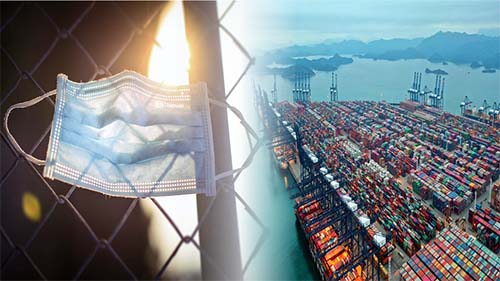
The export community in China has finally seen some relief in June, although no one is sure if this will stay long.
The Chinese currency started to depreciate against the USD from the beginning of June, and it has generally kept the depreciation trend so far. The exchange rate between USD and the CNY was 6.3572 on the 1st of June, and it was 6.4744 on the 25th of June, a change of 1.8%.
The raw material costs such as grey iron, copper and aluminum have dropped about 2% to 7% from the beginning of the month, but scrap steel has been on an upward trend, increasing about 4% from the end of May. There are reports however that this trend maybe temporary and we did see slight increase for some raw materials such as copper during the past two weeks.
Meanwhile, a few cases of the Alpha variant of COVID-19, first identified in the UK, were discovered at the Port of Yantian at the end of May. The follow-up actions by the local Government to immediately stop the spread have been quite successful and the port has now restored to full operation. However, the impact of the restrictions imposed at the Port during the past several weeks is quite serious, adding more pain to the global business communities that rely heavily on shipments from Yantian.
SHENTOU SUPPLY CHAIN MANAGEMENT CO. LTD. is a Shenzhen, China, based company serving international automotive clients in the implementation of their China strategies and programs. CHINA AUTOMOTIVE SUPPLIER QUALITY MANAGEMENT BRIEFING is a bi-monthly newsletter published by Shentou to address the specific and unique quality challenges and concerns international automotive companies face with suppliers in China. Comments are welcome at qms@shentou.com. Click here to subscribe.
